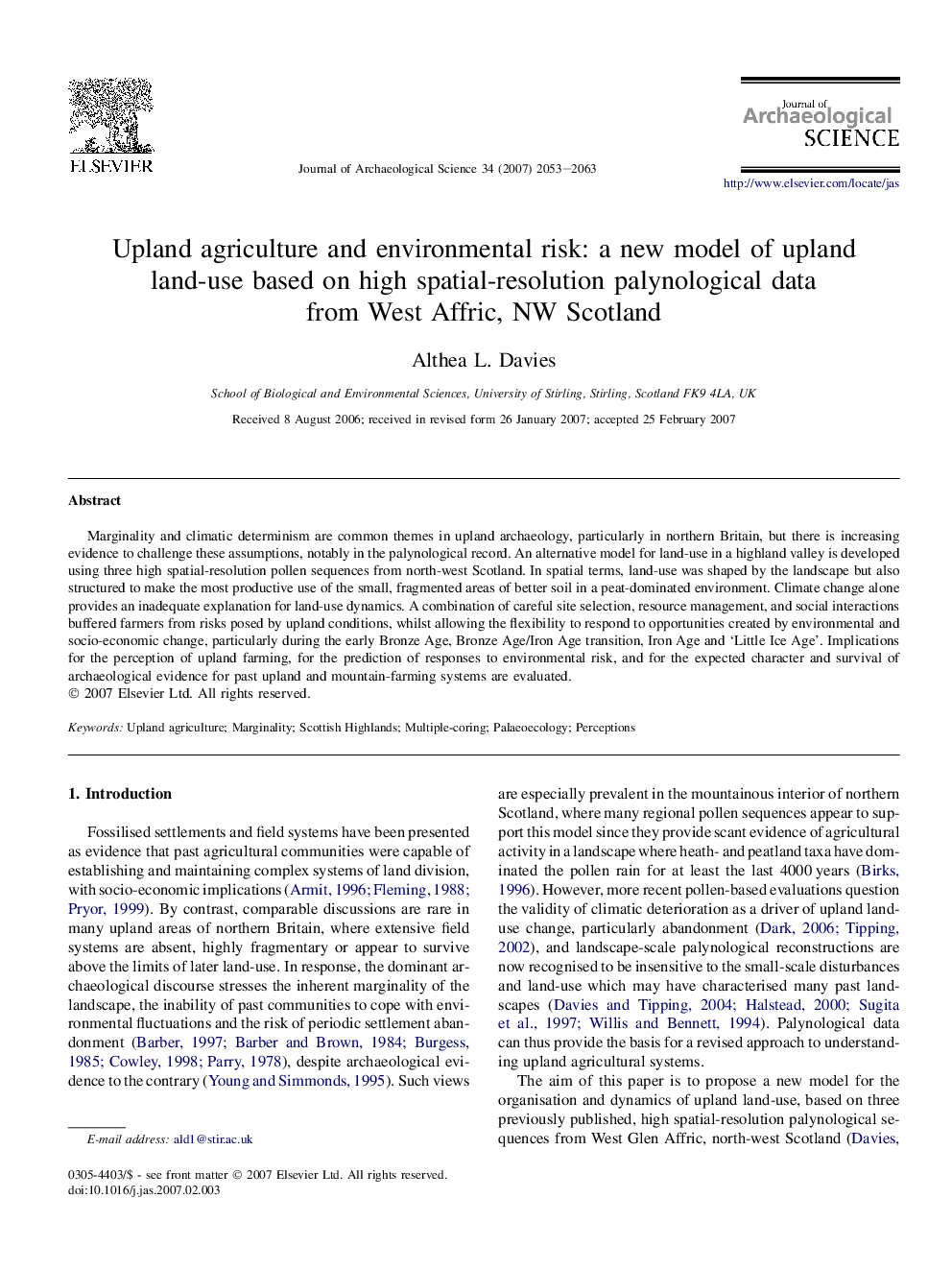| Article ID | Journal | Published Year | Pages | File Type |
|---|---|---|---|---|
| 1037228 | Journal of Archaeological Science | 2007 | 11 Pages |
Marginality and climatic determinism are common themes in upland archaeology, particularly in northern Britain, but there is increasing evidence to challenge these assumptions, notably in the palynological record. An alternative model for land-use in a highland valley is developed using three high spatial-resolution pollen sequences from north-west Scotland. In spatial terms, land-use was shaped by the landscape but also structured to make the most productive use of the small, fragmented areas of better soil in a peat-dominated environment. Climate change alone provides an inadequate explanation for land-use dynamics. A combination of careful site selection, resource management, and social interactions buffered farmers from risks posed by upland conditions, whilst allowing the flexibility to respond to opportunities created by environmental and socio-economic change, particularly during the early Bronze Age, Bronze Age/Iron Age transition, Iron Age and ‘Little Ice Age’. Implications for the perception of upland farming, for the prediction of responses to environmental risk, and for the expected character and survival of archaeological evidence for past upland and mountain-farming systems are evaluated.
